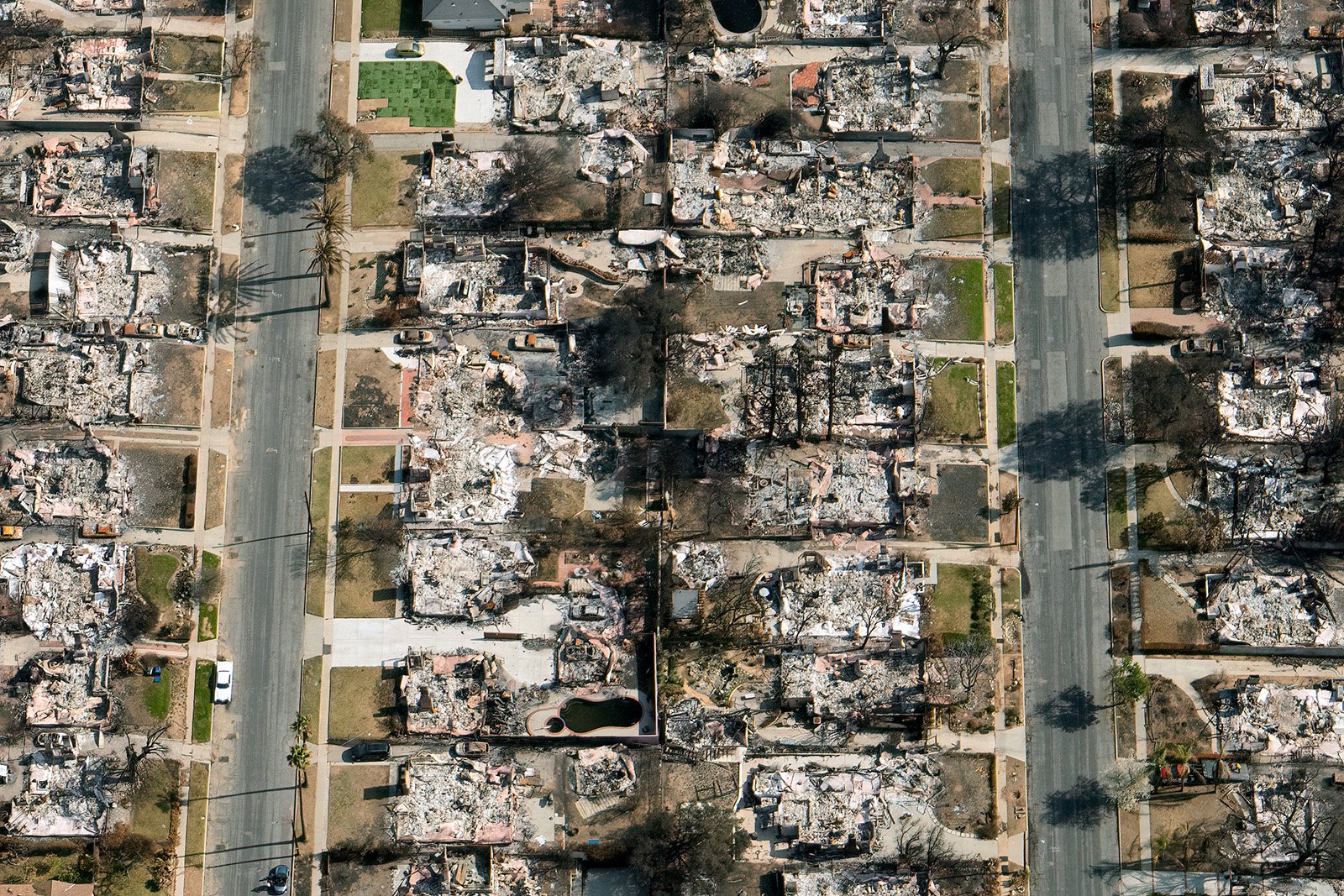
January 7, 2025 is a day burned into Los Angeles' memory. Fear ran rampant with three large wildfires burning throughout the city, the skies black with smoke, and toxic ash falling all around. While the media spotlight shone brightly on the Palisades Fire, which ravaged affluent neighborhoods in Pacific Palisades and Malibu, the Eaton Fire quietly wreaked havoc on the historically African-American, working-class community of Altadena, California. But despite its lesser media coverage, the Eaton Fire's impact was just as profound as the Palisades Fire.
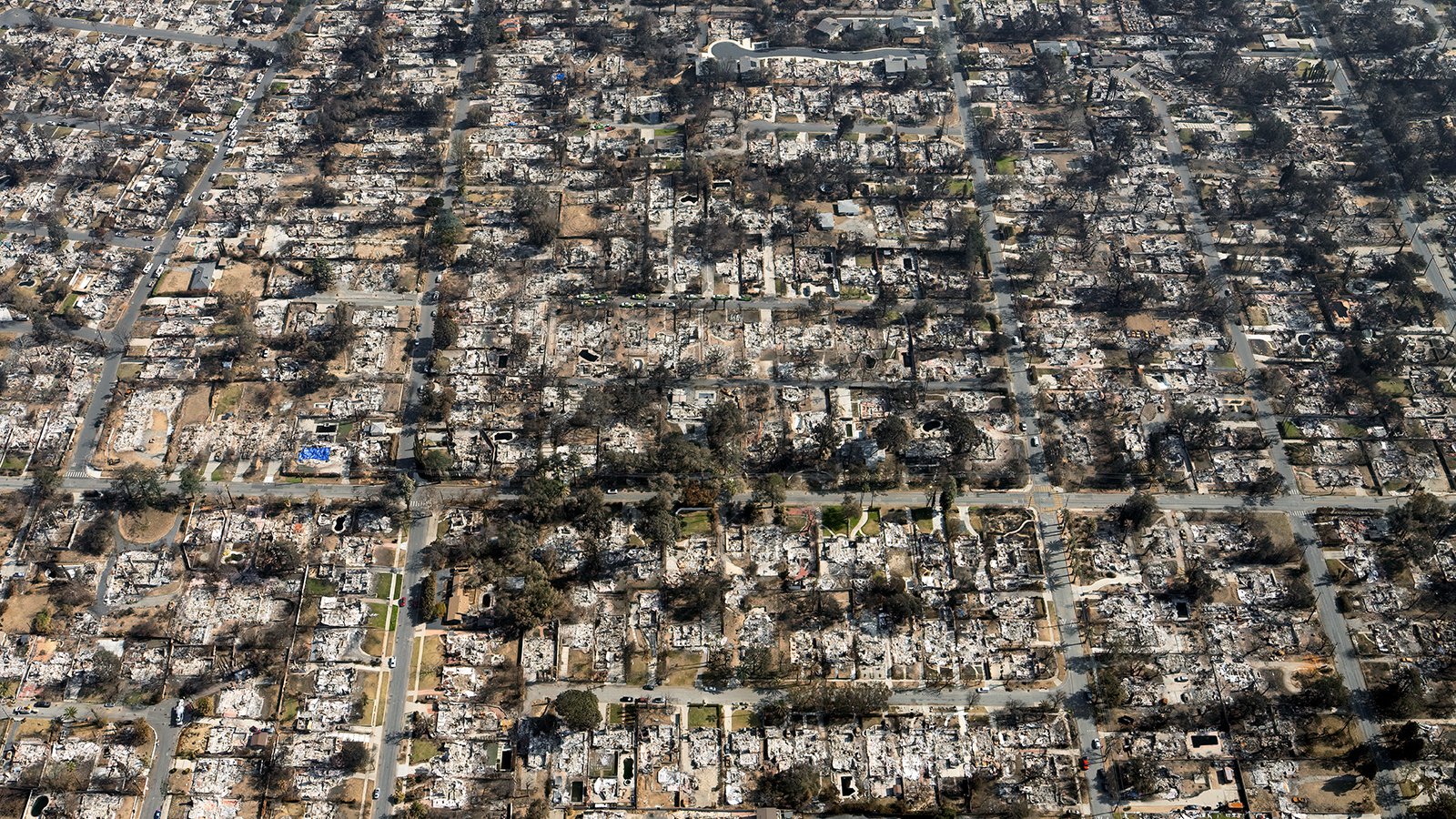
Aerial view of Altadena, CA, capturing the devastating impact of the Eaton Fire, which scorched 14,021 acres and obliterated over 9,000 homes, leaving a once-thriving community in ruins.
The Eaton Fire began on January 7, 2025, alongside the Palisades and Hughes fires. With chaos erupting across Los Angeles County, fear spread among Angelenos as strong winds howled outside and reports of new wildfires popped up throughout the city. Those ordered to evacuate received minimal notice, many fleeing with only the clothes on their backs. Some even abandoned their vehicles on congested roads and escaped on foot. The situation was pure pandemonium.
The Eaton Fire ultimately consumed 14,021 acres, making it one of the most catastrophic fire incidents in recent history. The fire left behind a trail of devastation, of the total 39,428 structures at risk during the blaze, 9,418 were completely destroyed, and an additional 1,071 sustained damage. Tragically, there were also at least 17 civilian deaths, and 24 individuals remain unaccounted for as of this writing.
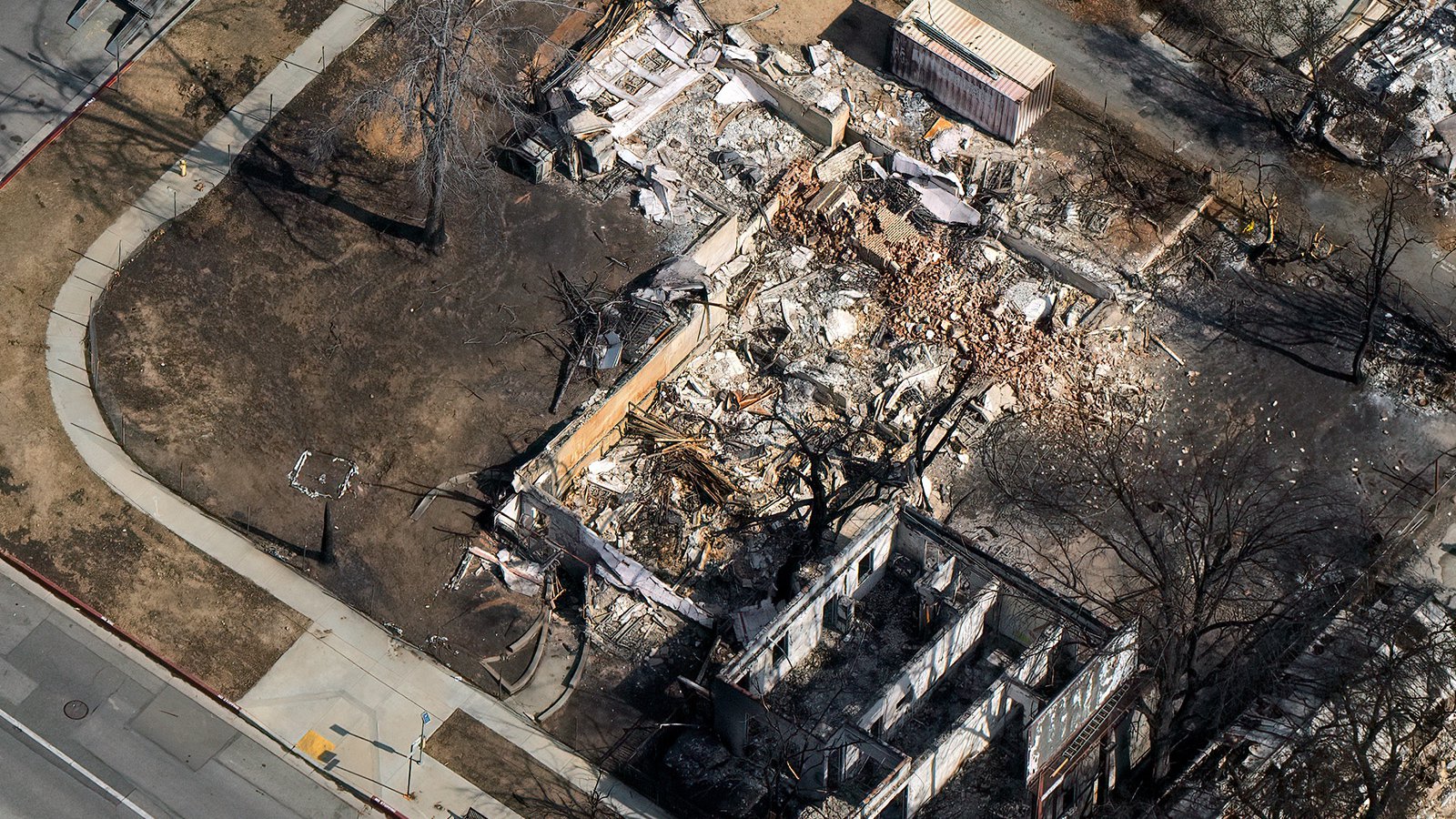
A stark close-up of a property in Altadena completely ravaged by the Eaton Fire, where high winds fueled extreme fire conditions, rapidly burning homes miles away from the initial blaze and prompting urgent evacuations throughout the area.
Intensified by the powerful Santa Ana winds, flames were propelled through highly flammable wildlands and into residential neighborhoods. These intense winds posed a significant challenge for firefighters attempting to control the fire's spread, especially early-on when the blazes were still small, as air resources were often unable to operate safely in the windy conditions and ground efforts were stretched thin due to the three wildfires simultaneously advancing through different parts of Los Angeles County. The speed of the blazes and realization that it would be impossible to contain them in time given the circumstances, caused priorities to be shifted towards preserving lives, prompting swift evacuations across multiple sections of the city. Numerous neighborhoods throughout LA County were issued mandatory evacuation orders, resulting in hundreds of thousands of Angelenos fleeing their homes. Altadena alone had over 100,000 residents evacuated.
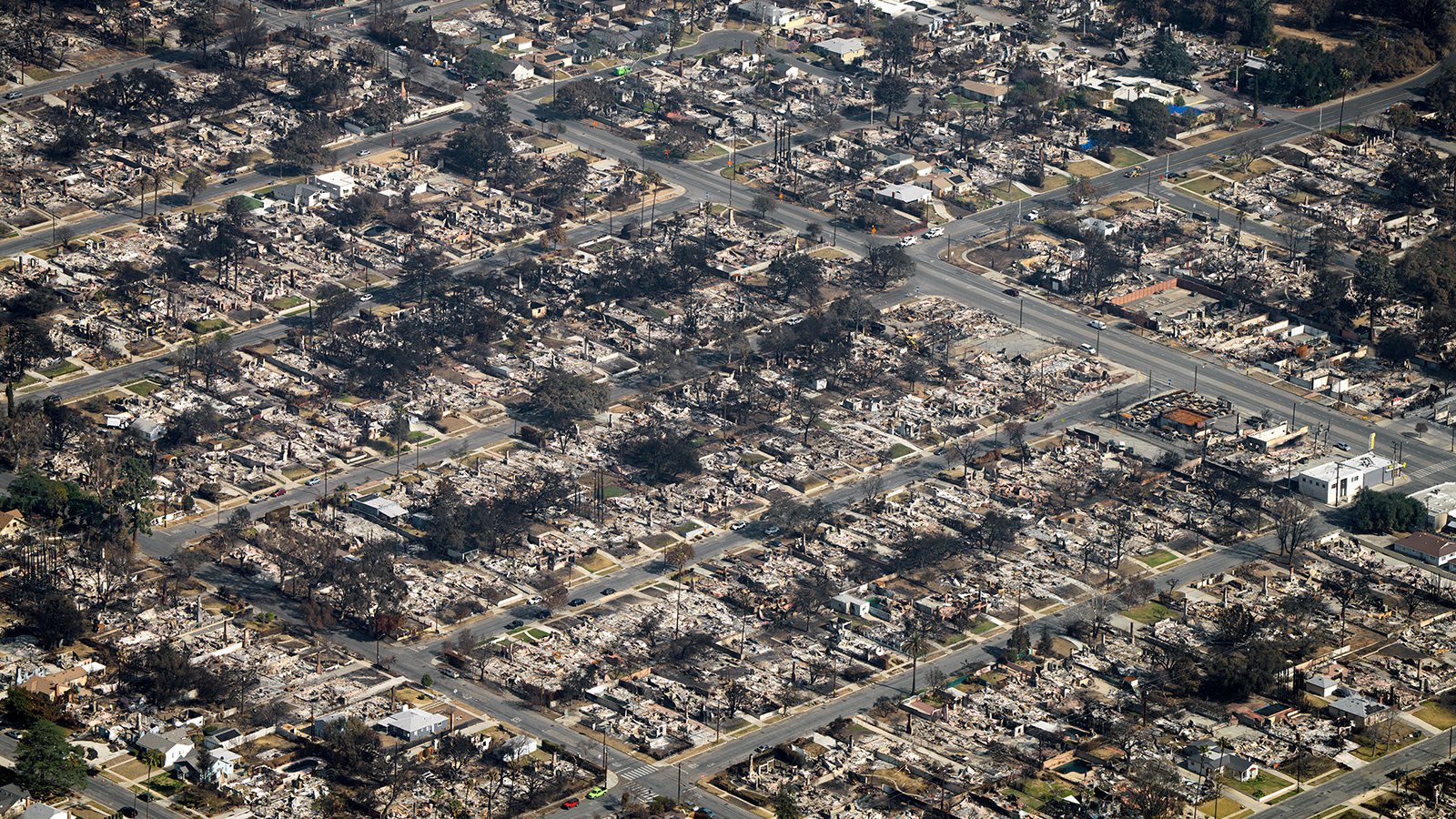
The devastation wrought by the Eaton Fire in Altadena as seen from above. Streets are lined with completely burned homes, juxtaposing the organized street layout with the chaotic ruins of the residential structures. The powerful Santa Ana winds played a crucial role in spreading the fire far and wide, rapidly consuming homes throughout the area and leaving a haunting scene of destruction.
Perfect Wildfire Conditions
The conditions leading up to the Palisades, Hughes, and Eaton fires were a perfect storm. A substantial high-pressure system over the Great Basin (an arid region including parts of Nevada, Utah, Idaho, Oregon, Wyoming, and California) unleashed powerful Santa Ana winds across Southern California. These intense gusts, reaching speeds up to 90 mph in mountainous regions, acted like a blowtorch, causing fires to spread rapidly, much faster and more widely than had been anticipated or previously seen.
Further exacerbating conditions, Southern California was experiencing moderate drought conditions following an eight-month period without any significant rainfall. This lack of moisture, which followed two years of unusually wet winters, turned the Los Angeles landscape into a tinderbox. Fire scientists had long feared these exact conditions and had voiced their concerns about the potentially life-threatening fire risks they were seeing develop.
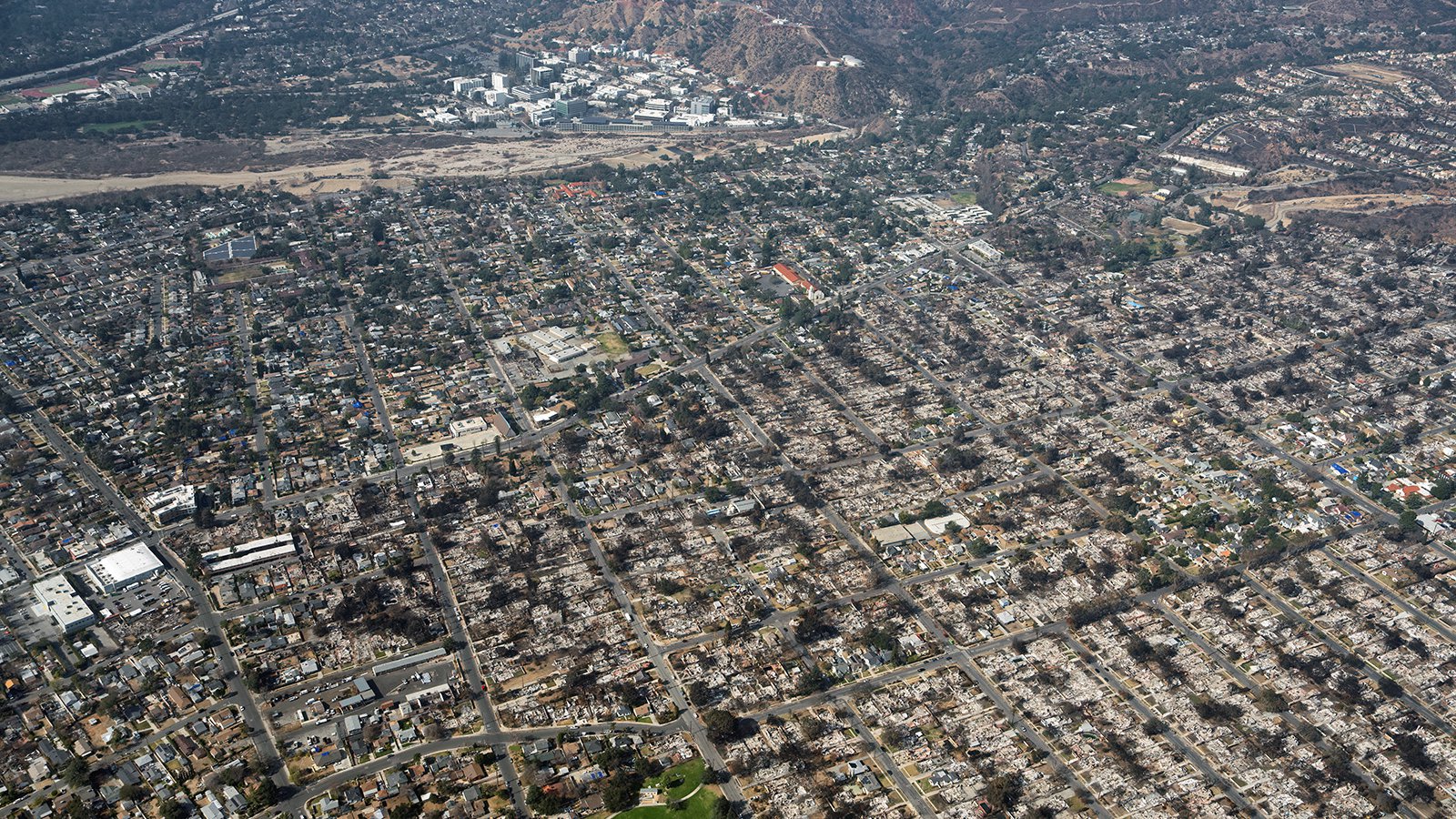
An aerial view showing the overwhelming destruction caused by the Eaton Fire in Altadena, CA, where despite warnings and preparedness, the fire's intensity rendered firefighting efforts futile in halting its destructive path.
Anticipating a life-threatening windstorm in the immediate future, the National Weather Service issued red flag warnings throughout LA County, days before the Eaton Fire occurred. Local firefighters were on high alert, ready for the worst-case scenario.
But despite their preparedness, the Los Angeles wildfires spread with a speed and intensity that hadn't been seen in past fires, making any quick containment efforts futile. The optimal wildfire conditions blew embers miles from the initial outbreaks and could turn a single spark into a large blaze in minutes, ultimately causing multiple destructive fires across LA County in very little time.
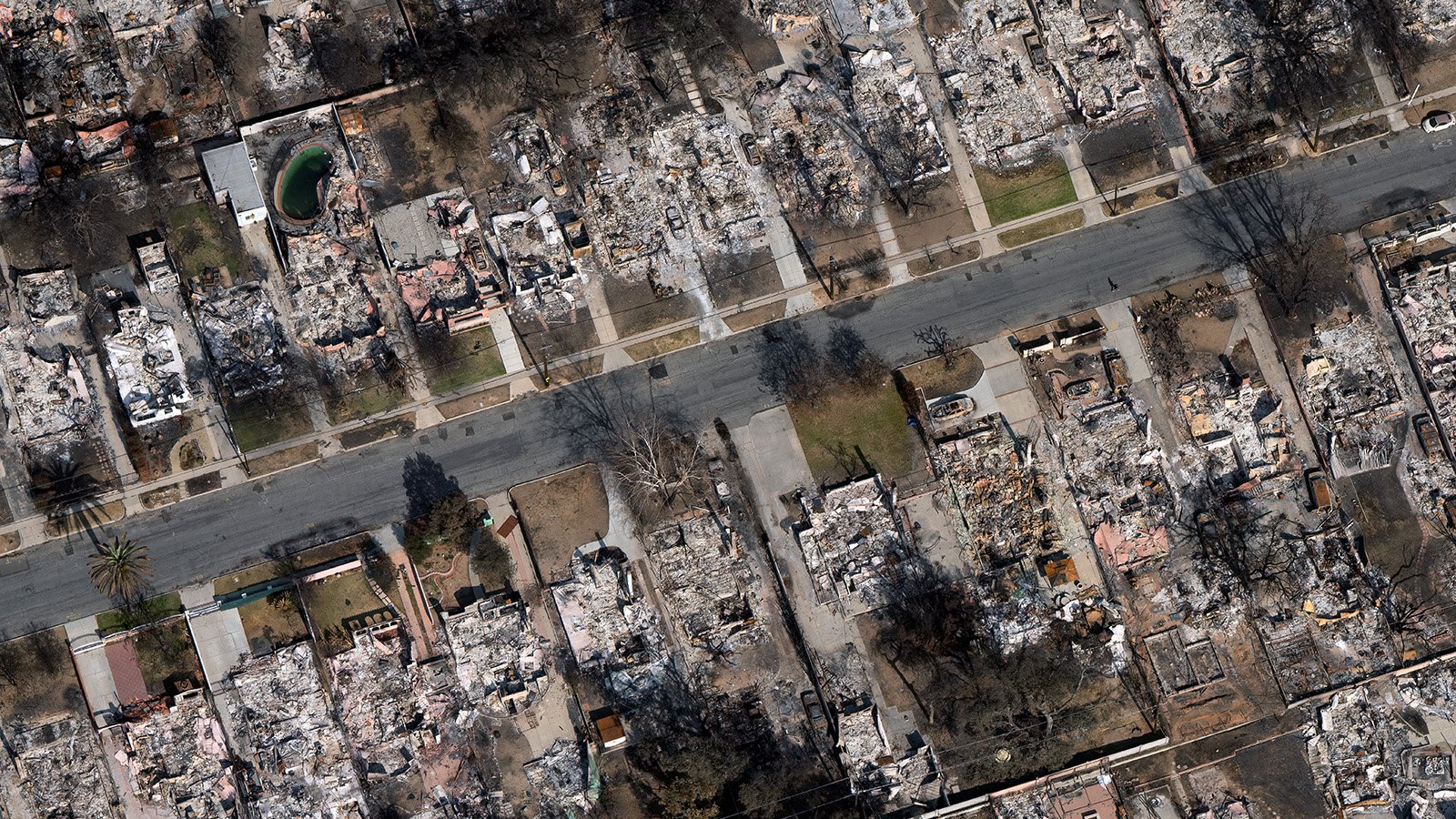
The Eaton Fire left rows of homes reduced to ash and scattered debris, illustrating the fire's destructive path through the Altadena neighborhoods and the profound loss experienced by the community.
Eaton Fire Progression
The Eaton Fire ignited around 6:18 p.m., and the situation quickly intensified. By 6:26 p.m., just 8 minutes later, firefighters stationed on Canyon Close Road in Pasadena reported that the blaze had already expanded to 10 acres, with flames spreading beneath high-tension power lines. The combination of dry conditions and strong winds blew embers from the Altadena fire significantly further than anticipated, and ignited many structures far from the initial blaze in the mountains.
The fire intensified and swiftly expanded to over 1,000 acres by 12:07 a.m., driven by the relentless Santa Ana winds, despite the immense efforts by firefighters and firefighting aircraft. By the following morning, January 8, the fire had grown to over 10,600 acres with 0% containment by 10:36 a.m.
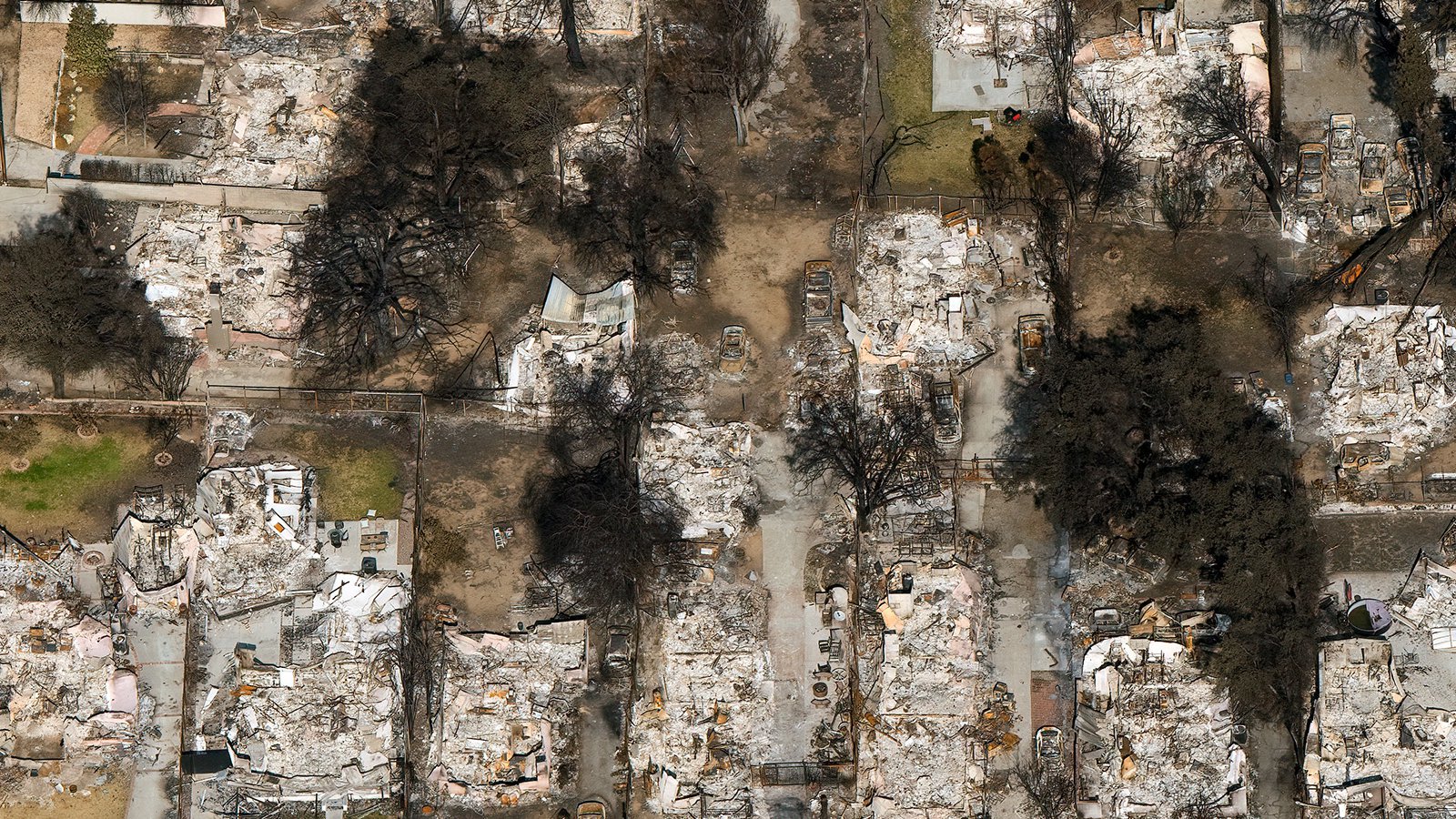
A detailed, close-up view of residential properties in Altadena, CA, that have been completely consumed by the Eaton Fire, leaving white and gray ash blanketing the ground and just the skeletal remains of what were previously homes.
To tackle the fire, an extensive array of resources was mobilized across the region, including 3,408 firefighting personnel, 16 helicopters, 375 engines, 29 bulldozers, 50 crews, and 90 water tenders. These concerted efforts over several weeks were pivotal in ultimately bringing the fire under control, achieving 55% containment by January 16 and reaching full containment within the Eaton Fire perimeter after 24 days, on January 31.
Community Impact and Recovery Efforts
The Eaton Fire's devastation extends beyond the physical destruction of homes; it poses a significant risk to the historic Altadena community.

A wide aerial view of the extensive and devastating impact of the Eaton Fire across multiple residential neighborhoods in Altadena, California. Multiple blocks of burned homes illustrate the severe threat to the community both physically and in spirit.
The Historic Altadena Meadows
Emerging in the 1930s, discriminatory redlining practices prevented African Americans from purchasing property or land in many parts of California. One of the few exempt areas was Altadena Meadows, which became a thriving, middle-class African American community. Ultimately the Altadena Meadows neighborhood would be incorporated into greater Altadena, but would continue to retain its distinct cultural identity and close-knit community.
The Looming Risks of Gentrification
The Eaton Fire's devastation has placed Altadena's close-knit community at significant risk, threatening both their cultural heritage and future stability. The destruction of historic sites and homes has not only erased physical landmarks but the displacement of residents has also jeopardized the community's cultural identity. The high cost associated with rebuilding adds another layer of difficulty, as many residents, due to the lingering socioeconomic hardships from historic redlining policies, face financial barriers to restoring their homes and businesses.
This community, which has long been a symbol of African-American resilience and achievement, now faces the looming threat from gentrification. With property values in Altadena already on the rise, developers eye the area for new opportunities, threatening to displace long-standing residents and erode the community's rich cultural fabric.
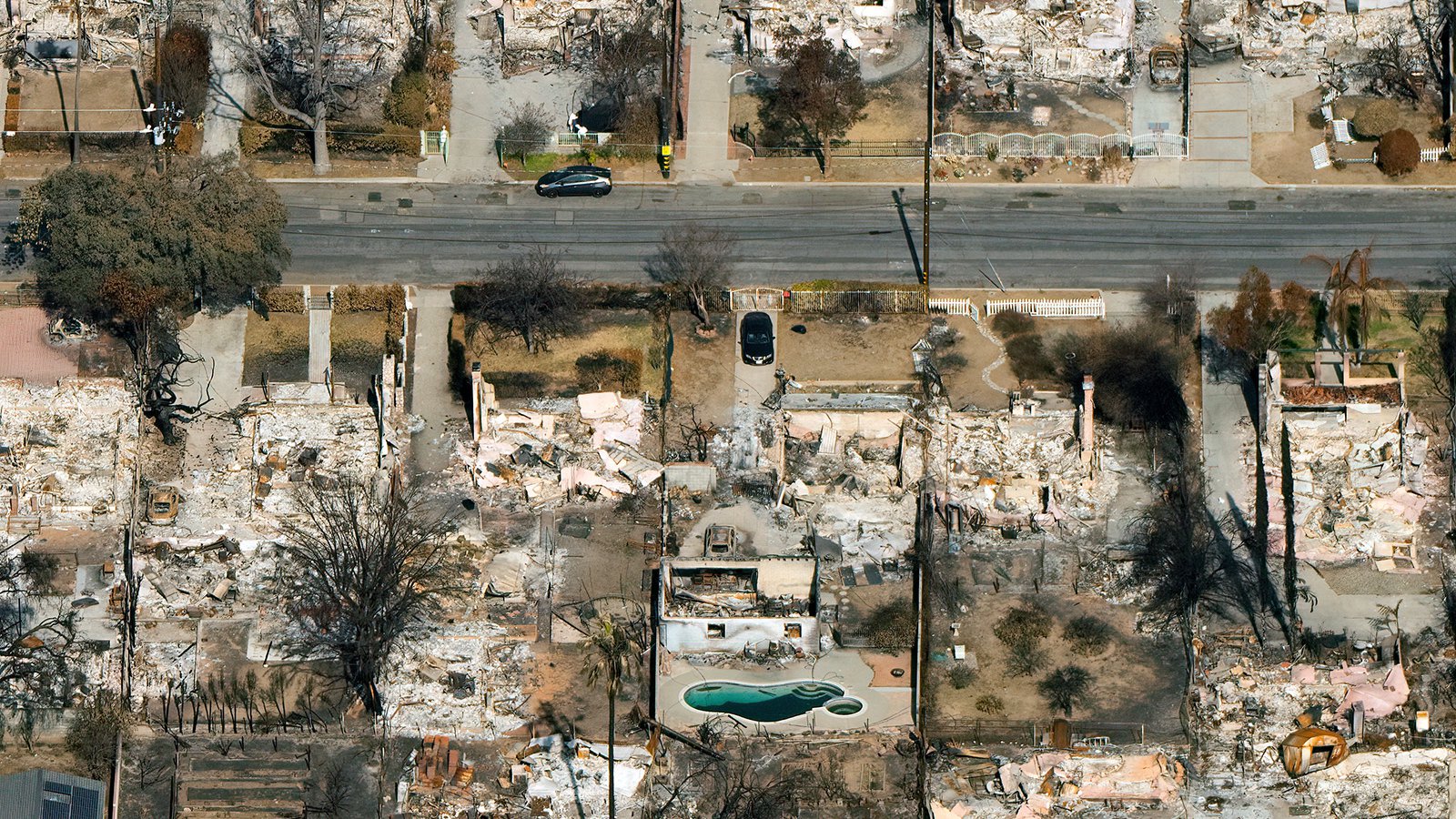
Aerial photo capturing the profound emotional and financial toll of the Eaton Fire on Altadena, where the ashen remains of homes on either side of the road underscore the devastating impact of the disaster and highlight the heightened risk of losing this historic community forever.
Recovery and Renewal
The Eaton Fire has had a profound impact on the Altadena community, leaving many residents grappling with the emotional and financial toll of losing their homes and livelihoods. But despite these challenges, the Altadena community's resilience shines through as residents express a strong desire to reclaim what was lost and to rebuild. The spirit of support and compassion among Altadena residents is a testament to their determination to overcome adversity and work towards recovery and renewal.
Looking Forward: Fire Safety and Prevention Actional Steps
Through collaboration and the implementation of modern fire safety practices, communities like Altadena can bolster their resilience against future wildfires, allowing them to safeguard their homes and save lives.
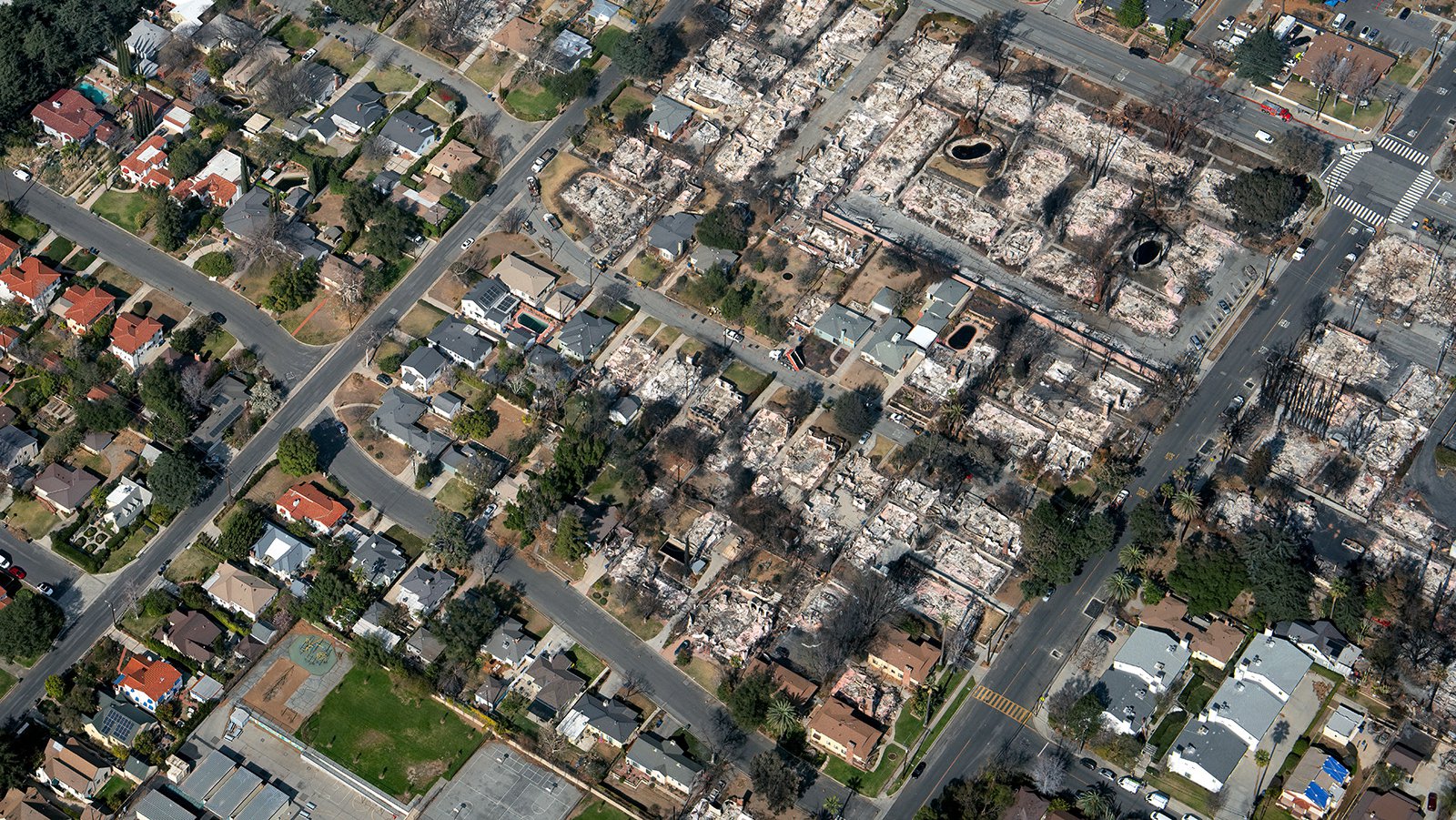
The stark contrast between intact and burned homes highlights the severe impact of the Eaton Fire and underscores the importance of fire-hardening structures to significantly enhance community safety.
Updating Fire Hazard Maps
The Eaton Fire revealed significant shortcomings in the current fire hazard maps. Numerous structures that were destroyed lay outside the designated 'very high' fire hazard severity zones, highlighting the need for more precise and updated mapping. Recent modeling by First Street showed that 94% of properties impacted by the Eaton Fire had severe or extreme fire risk, in stark contrast to the 21% previously identified by Cal Fire. This discrepancy emphasizes the critical need to constantly update fire hazard maps, especially as the climate continues to change, to more accurately reflect the true risk levels.
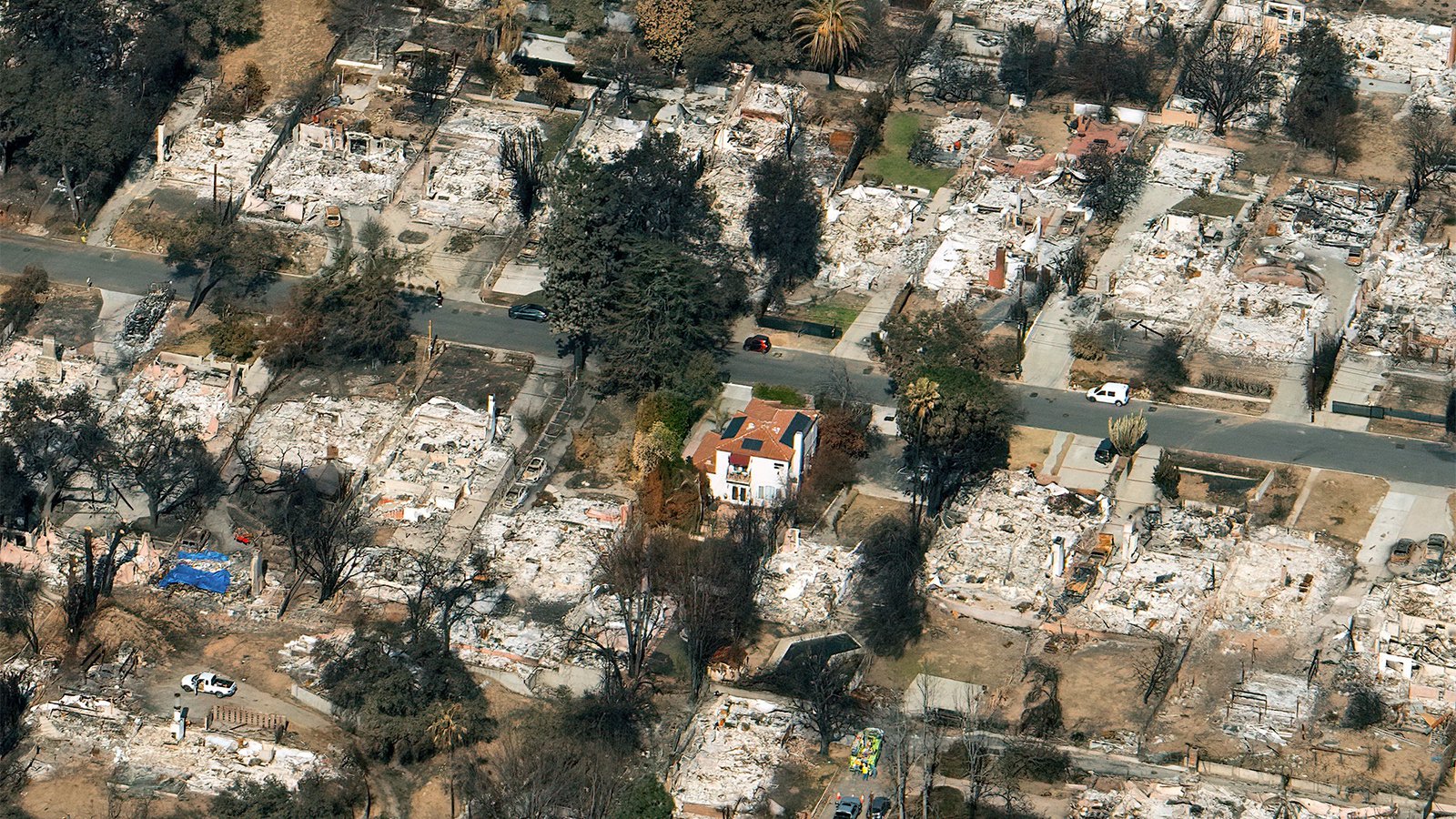
A lone, seemingly untouched house with a red tile roof remains among the destruction, showing the unpredictability of wildfires and the critical role of community collaboration and implementation of fire safety practices to protect structures against future blazes.
Fire-Hardening Homes
Updated fire hazard maps provide critical information to residents and builders. In 'very high' and 'high' hazard zones, the law mandates that new construction incorporates home-hardening techniques using ignition-resistant materials. But these mandates and recommendations did not exist when the majority of the Altadena homes were constructed.
Today, residents can implement various fire safety measures while rebuilding to safeguard their homes and communities against future wildfires. Establishing defensible space by clearing the area around residences has been shown to greatly diminish the risk of fire damage, specifically by removing flammable vegetation and materials away from homes. Post-fire analysis has determined that wooden fences were a significant fuel, contributing to the destruction of many more homes than would have otherwise occurred.
Implementing home hardening and wildfire-resistant landscaping is most effective when embraced collectively by the community. This united effort can substantially lower overall fire hazards and safeguard entire neighborhoods from devastating wildfires, like the Eaton fire.
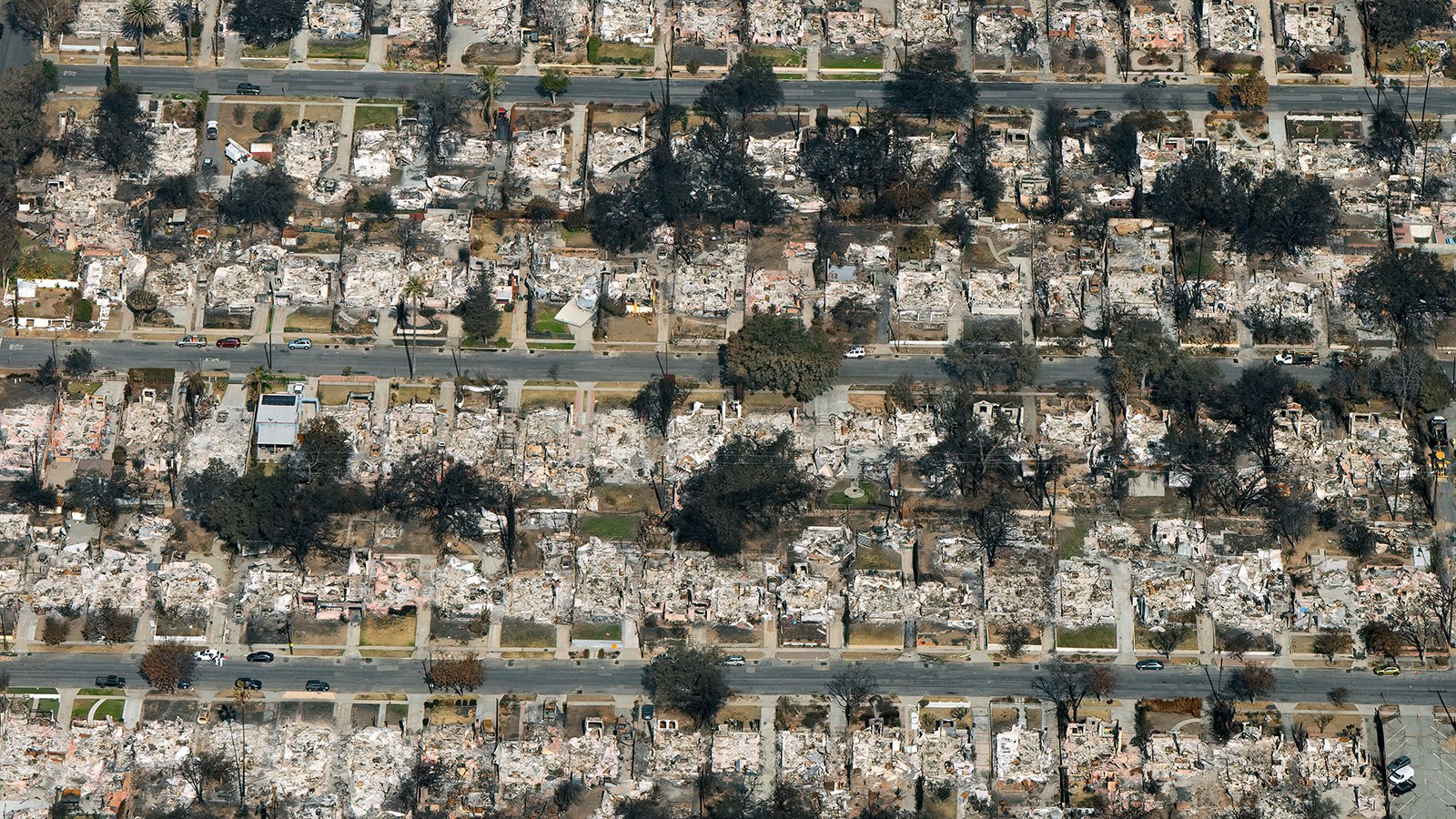
Seemingly endless rows of residential properties that have been completely consumed by the Eaton Fire, underscoring the critical need for the community to collectively fortify against wildfires.
The Eaton Fire of 2025 unleashed unprecedented destruction across Altadena, consuming 14,021 acres and devastating thousands of homes. The fire exposed vulnerabilities within fire hazard severity zones, and underscored the urgent need for accurate fire hazard maps, but it also ignited a community-driven spirit of resilience. As Altadena residents rally together to rebuild, they are committed to implementing fire safety measures and supporting one another. This collective effort promises a future where the community not only recovers but thrives despite the destruction, fortifying themselves both physically and spiritually against future wildland fires.
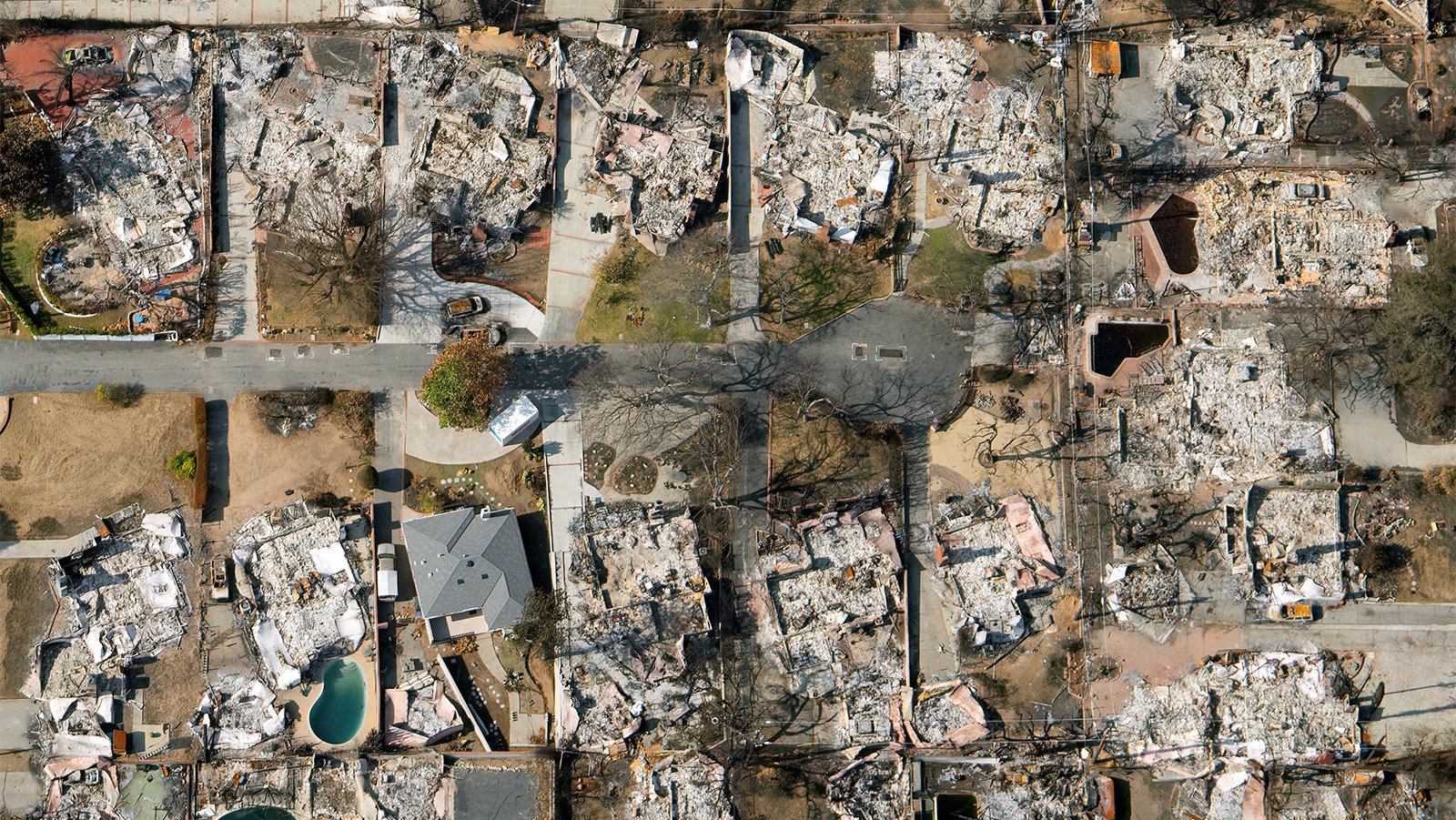
An aerial view of the Eaton Fire's aftermath in Altadena shows a cul-de-sac where homes have been reduced to rubble and ash, with blackened pools and burnt vehicles scattered throughout, highlighting the complete destruction and the looming risk to the historic community's future.
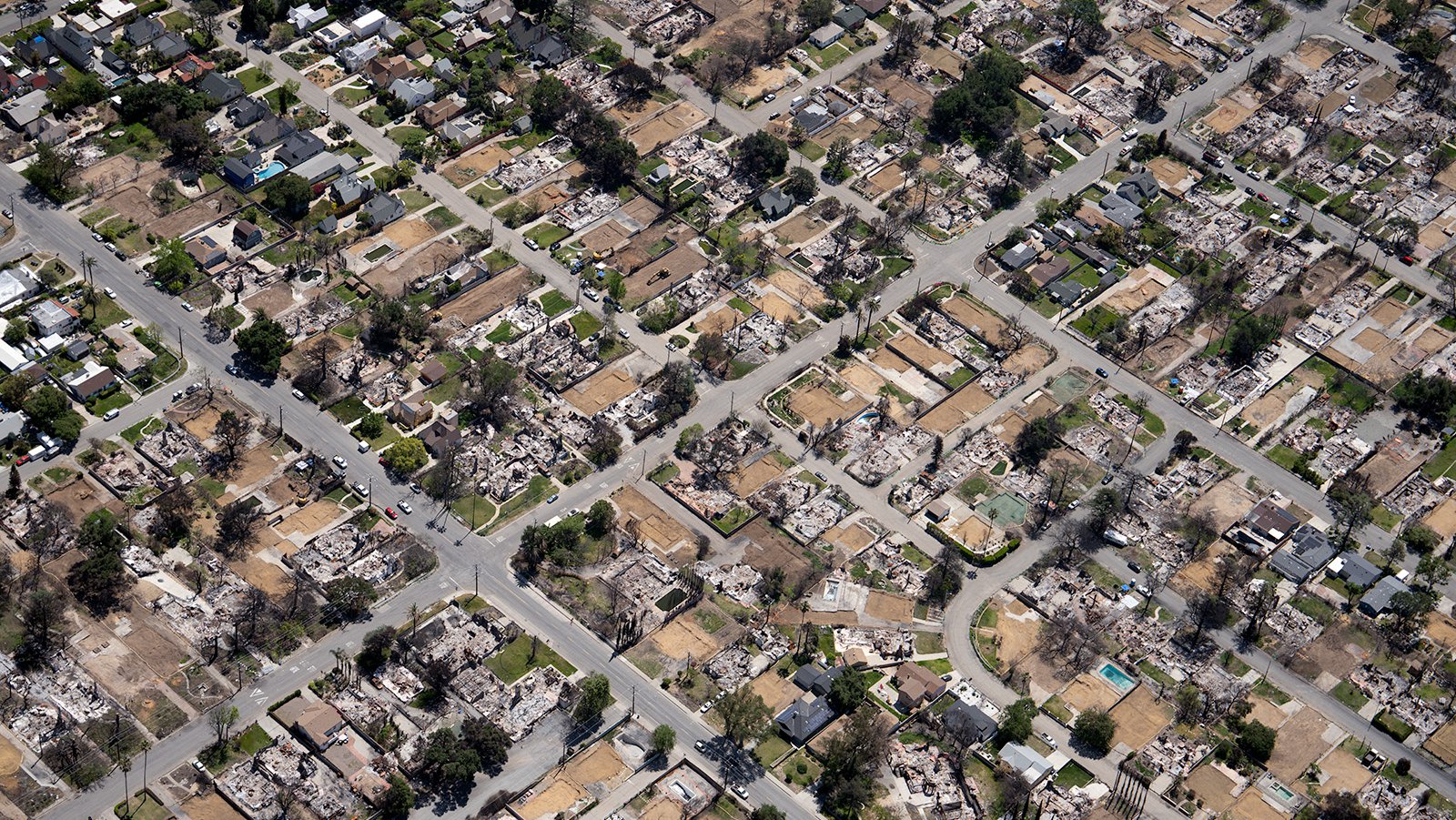
Months after the Eaton Fire in Altadena, California, the community is in the early stages of recovery. Multiple streets are visible, with numerous residential parcels now appearing as cleared, brown earth, indicating that ash and debris have been removed in preparation for future rebuilding.
Post-Fire Clean-Up and Recovery Efforts
Months after the devastating Eaton Fire ravaged Altadena, the community is witnessing tangible progress in its recovery efforts. A substantial percentage of parcels have already been meticulously cleared of ash and debris. These now bare dirt lots signal a new beginning, ready for the construction of homes and businesses that will breathe life back into the community.
The clean-up process has been a monumental task, involving coordinated efforts between local authorities, residents, and specialized recovery teams. The removal of hazardous materials and debris has been crucial in paving the way for rebuilding, while also addressing environmental concerns by ensuring that the land is safe and stable for future development.
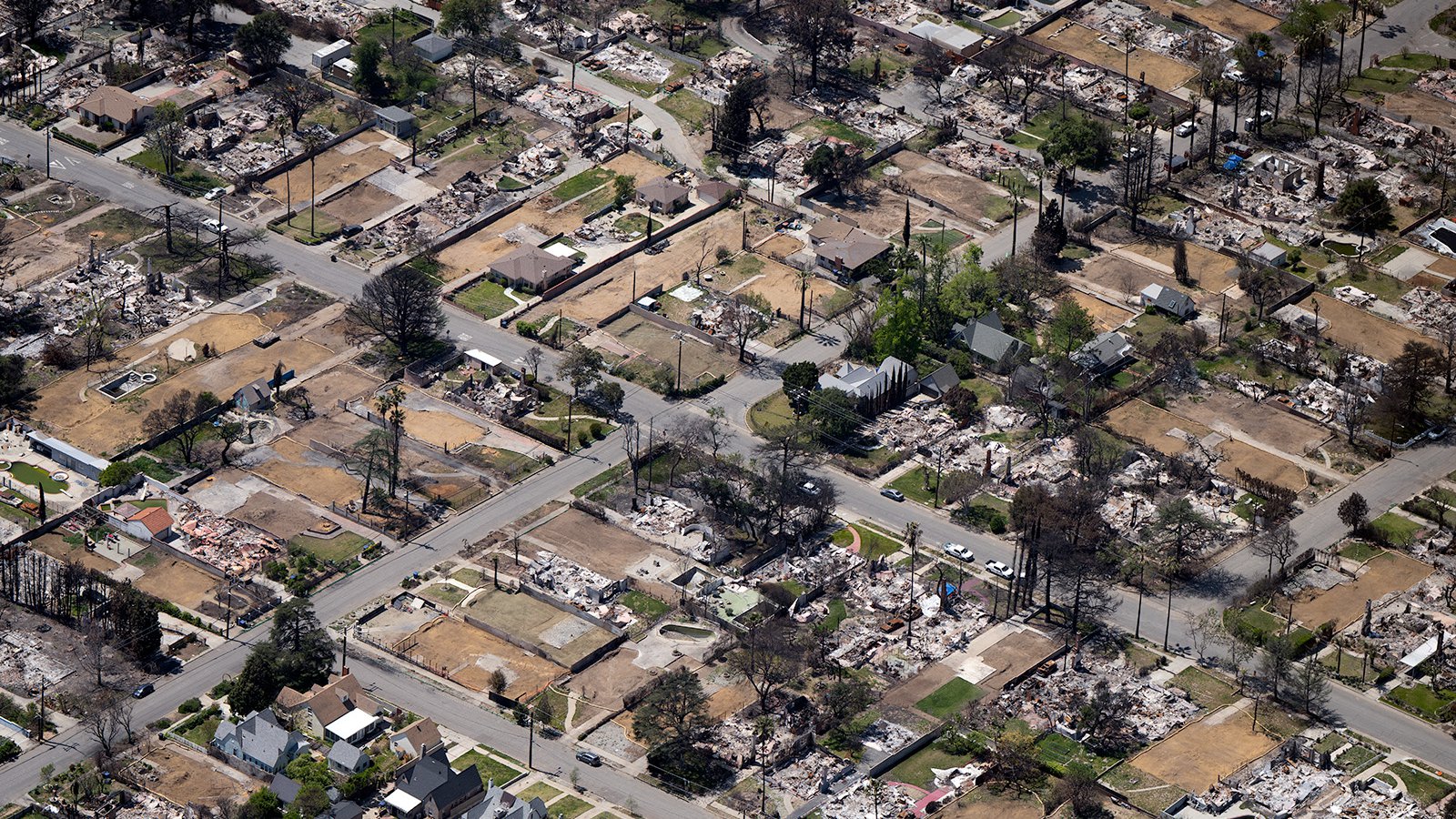
Several months after the Eaton Fire, the community is in a state of partial recovery. Interspersed among the cleared lots are a few properties that remain piles of ash and rubble, showing the beginnings of recovery across the area.
This phase marks a hopeful turning point for Altadena, as the community looks forward to reconstructing homes and restoring its vibrant spirit. The cleared lots stand as a testament to the resilience and determination of Altadena residents, who, despite the challenges, are committed to rebuilding a stronger, more fire-resilient community. As construction plans are set in motion, there is a palpable sense of optimism and renewal, with the promise of a brighter future on the horizon.
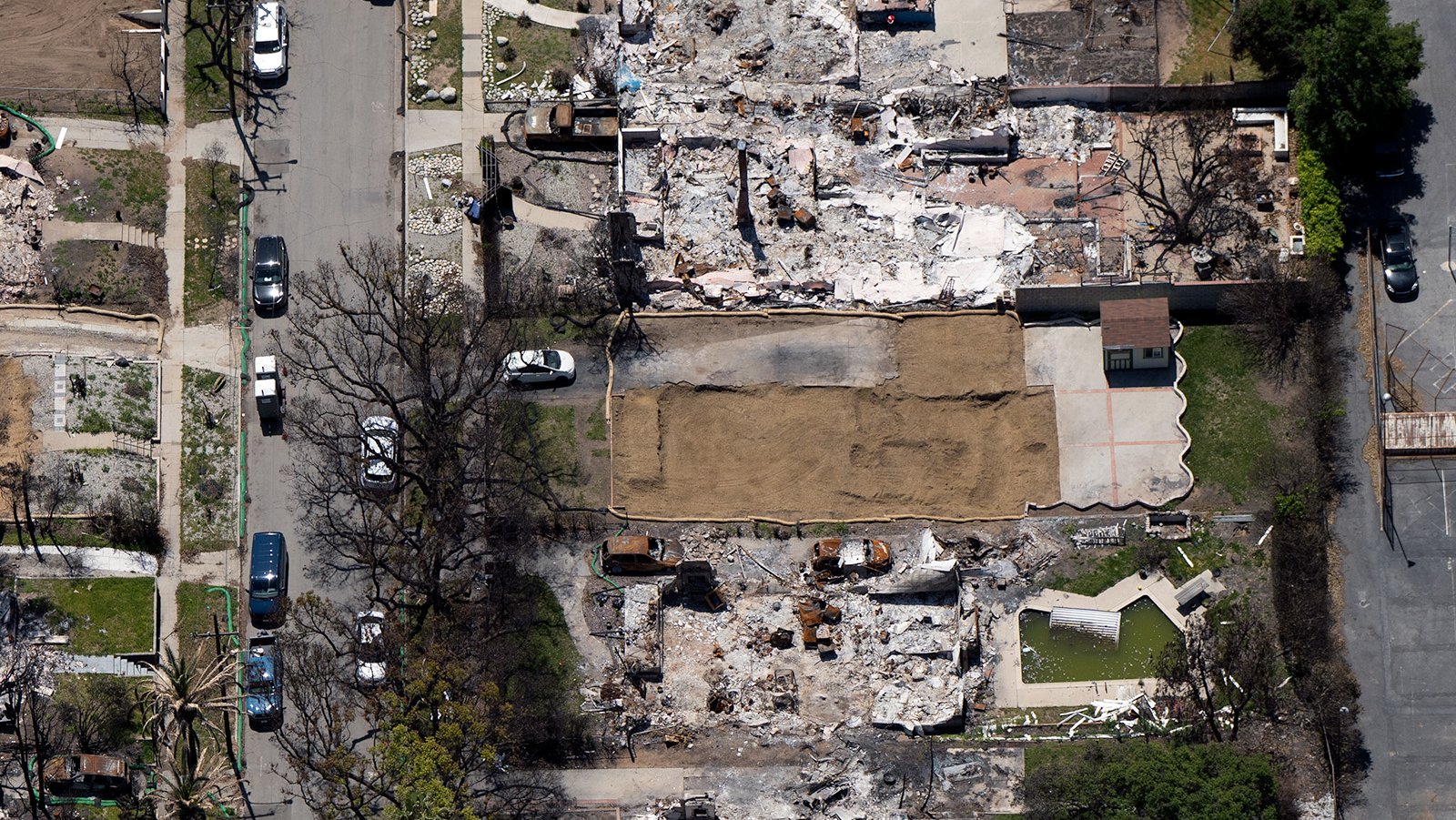
A single residential parcel that has been cleared of fire debris, revealing bare, brown earth ready for rebuilding. This cleared lot contrasts with the surrounding properties, which remain covered in piles of white ash and rubble.